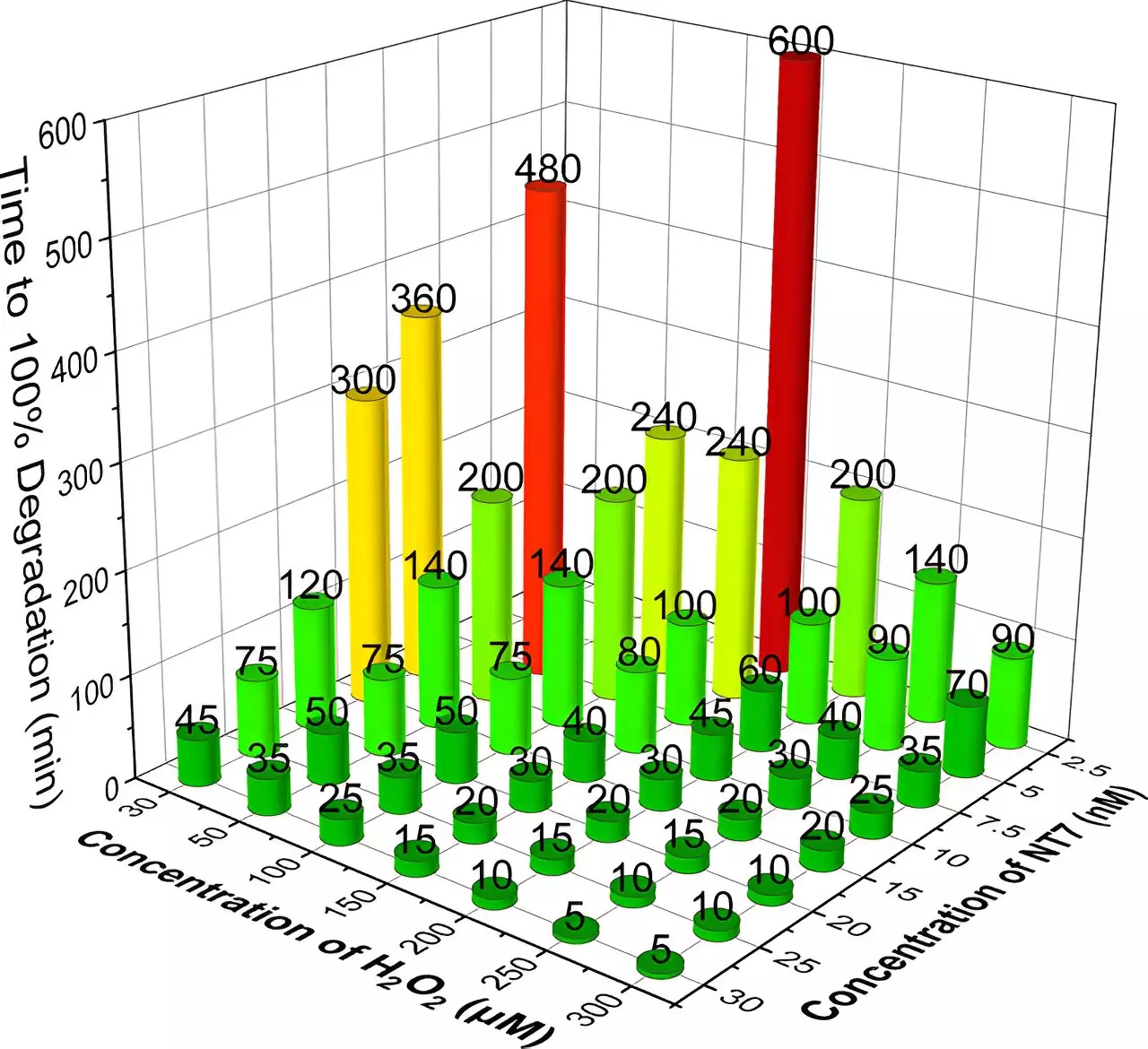Water pollution poses a significant threat to ecosystems and human health, particularly in the context of pharmaceutical contamination. With the proliferation of prescription medications used in both human and veterinary contexts, trace amounts of these substances have made their way into wastewater and natural water bodies worldwide. Conventional water treatment processes, while effective at removing many pollutants, often fail to eliminate micropollutants, resulting in the presence of pharmaceuticals in drinking water sources. A recent breakthrough by researchers at Carnegie Mellon University offers an environmentally sustainable and effective solution using TAML (tetramethylenediamine) catalysts in conjunction with hydrogen peroxide.
Carnegie Mellon scientists have developed a new TAML catalyst, dubbed NewTAML, which demonstrates remarkable efficiency in activating hydrogen peroxide at ultra-low concentrations. This innovative method presents a viable alternative for degrading various high-concern drugs commonly encountered in contaminated water sources, such as antibiotics, synthetic estrogens, and nonsteroidal anti-inflammatory drugs. The process is simple: by mixing this bioinspired catalyst with hydrogen peroxide in contaminated waters, the need for extensive and costly treatment methods is significantly reduced.
Terry Collins, a leading chemist in green chemistry at Carnegie Mellon, asserts that this method not only proves economical but also ensures safety and sustainability. The materials used are non-toxic and cost-effective, culminating in a purification process that can be scaled up or adapted to different environments without incurring hefty financial burdens.
Testing and Efficacy of the New TAML Catalyst
Researchers conducted extensive tests evaluating the effectiveness of the NewTAML catalyst against six drugs of significant environmental concern. Laboratory tests revealed that even minimal amounts of the catalyst and hydrogen peroxide managed to degrade these drugs efficiently—five of the six were rendered non-detectable within hours. This compelling result underscores the potential of TAMLs to revolutionize wastewater treatment, especially considering that traditional methods can leave considerable amounts of pharmaceuticals in treated water.
In scenarios mimicking real-world conditions—such as spiked municipal secondary wastewater and environmental water from rivers and lakes—the NewTAML catalyst maintained its high efficacy. This adaptability is crucial given the varied concentrations of micropollutants often found in different water sources, reinforcing the versatility and necessity of implementing TAML-based systems in the field.
Environmental Impacts and Future Applications
One of the major takeaways from this research is the potential for TAML-based processes to safeguard aquatic wildlife from the dangers posed by drug contamination. Long-term exposure to these micropollutants has been associated with adverse health effects in various species, disrupting ecosystems and biodiversity. As the world faces mounting environmental challenges, the introduction of cost-effective, easy-to-implement remediation strategies like NewTAML becomes all the more important.
Furthermore, the implications of this research extend beyond pharmaceutical contaminants. The fundamental chemistry behind TAML catalysts holds potential for addressing numerous environmental pollutants that current methods struggle to tackle. The promise of broad applicability signifies a possible horizon where water quality can be restored not just in urban settings but across differing ecological and industrial landscapes.
To move toward practical application, Collins and his team have secured patents for the NewTAML technology and partnered with Sudoc, a startup dedicated to commercializing TAML-based solutions. The recent infusion of $20 million in capital will provide necessary resources for advancing the initiative, especially targeting the European water treatment market urgently seeking effective antidotes to its pollution crises.
The prospect of scaling this ingenious TAML/peroxide system raises hopes for an integrated approach to tackling water pollution on a global scale. With the potential for the marketplace to embrace and implement this innovative technology, we could witness a future where safe and clean water is not merely an aspiration but an attainable reality.
As challenges posed by polluted water systems grow more complex, solutions like the TAML/hydrogen peroxide method stand out as crucial pathways towards achieving cleaner, safer water. This innovative approach demonstrates not only technical capability but also environmental and economic sensibility. The work by Carnegie Mellon researchers illuminates a future where water systems are not only efficiently managed but are also capable of harmonizing with ecological priorities. Embracing such solutions could potentially usher in a new era of sustainable water management, benefitting both human health and natural ecosystems alike.

